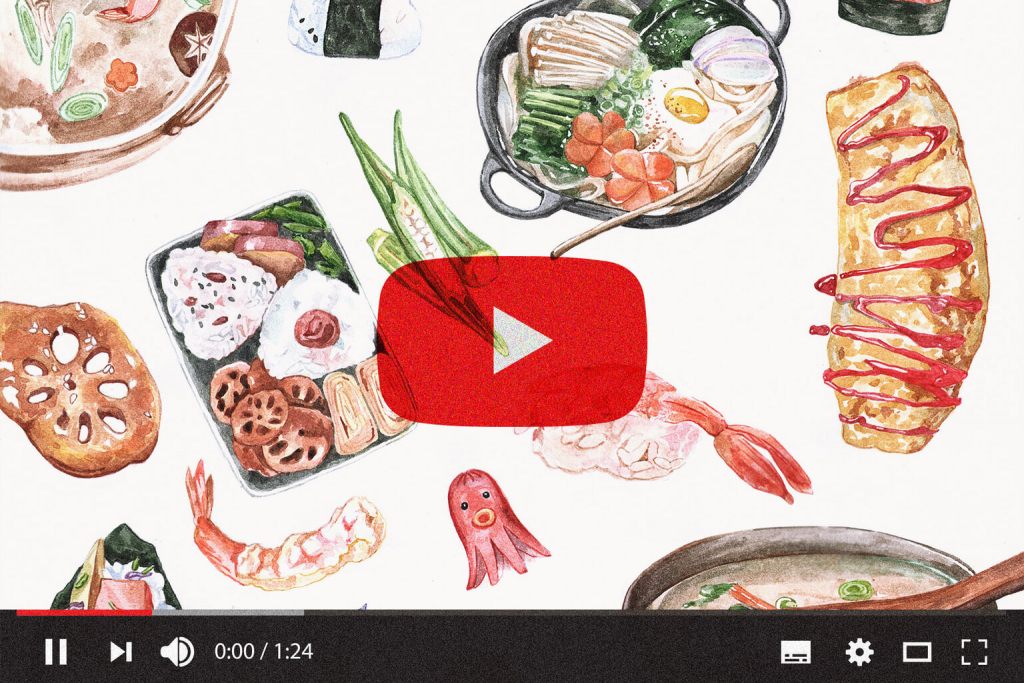When I started my own YouTube channel to show English speakers how to cook Japanese food, I certainly didn’t think it would be easy. However, I had no idea just how vast the ocean of Japanese cuisine would be. Now, it’s all the more impressive to come across people who can navigate that ocean with apparent ease, especially cooks who take advantage of the seasons and are umami masters. I spoke with five such people. They are YouTubers who distill the main lessons they learned through cooking both on and off-camera. There’s a lot we can learn and bring back to our own kitchens, whether that’s in Japan or elsewhere.
Simplicity
Let’s start simple.
In the English-speaking world there is a strange, and largely incorrect, idea that Japanese food is mysteriously complicated. But spend any time in a Japanese home and you’ll quickly realize that is far from true. Although many households will serve a number of small dishes, each one of those dishes is simple in itself.
Most of those who I spoke to alluded to this simplicity. Misa Enomoto, of YouTube channel Misa Enomoto’s Seasonal Japanese Cooking, mentioned a newfound love of simple dishes. She said bringing out the natural flavors through simpler dishes is “one of the great things about Japanese cuisine.”
Even for something as basic as broth, often considered a foundation for any cooking, Japanese dashi is much quicker and simpler to make than a typical European chicken stock, for example. So perhaps cutting down and concentrating on the natural flavors is the first step to more satisfying Japanese food.
Miwa from Miwa’s Japanese Cooking echoed these sentiments, saying, “eating simple is not boring, it’s actually beautiful. She even topped this with a delightfully simple refrain: “Be lazy, be happy.”
Seasonality
Something that might scare you off is the seemingly endless array of ingredients that renew at the turn of every season. Elsewhere, thanks to greenhouses and imports, seasonality in ingredients is not a big factor. But Japan still takes pride in fresh foods of the season, whether it’s bamboo shoots in spring or goya in the summer.
Having moved to Japan from the US, Marc Matsumoto from No Recipes says living here has made him even more cognizant of the seasons. “Some foods like apples and oranges I used to take for granted as being available year-round now disappear from store shelves for large swaths of the year.”
Certainly, not being able to grab an apple for a summer snack is something that might take a bit of getting used to. There are, however, plenty of other products to choose from, so you just need to learn to make the most of them.
Although Enomoto clearly learned a lot from her time at culinary school, when it comes to the seasons, she told me: “I also learned by making a point of bringing seasonal ingredients to the dinner table.”
It seems that the key to cooking seasonally is to simply be active in choosing your ingredients and experiment with what you find.
Umami
Something that’s available year-round is dried kombu seaweed, the star on the umami stage. In recent years, umami has become an inescapable term among foodies and chefs the world over. The term was coined by Kikunae Ikeda, the very person who discovered monosodium glutamate (MSG), the purest form of umami. The term and concept are rooted in Japanese culinary culture.
Using dashi (Japanese soup stock) in your cooking is one of the simplest and most common ways to add an umami punch to your food. Namiko Chen from Just One Cookbook underlines its importance.
“This umami-rich broth is fundamental to Japanese cooking and you should not skip it,” she says. The umami flavor is what makes the food uniquely Japanese.
Takuya Iwamoto from Chef’s Labo goes as far as to say kombu is a “magical ingredient.” He adds, “It hardly has any taste or flavor, but it has heaps of ‘umami’. It’s a pure umami enhancer.”
If you’re looking to drop some umami bombs at your next dinner party, it sounds like kombu dashi is probably the way to go.
Combining Cuisines
Of course, the ability to amplify umami is not limited to Japanese cuisine. But Enomoto says that in comparison to western food, Japanese dishes bring out umami and have more dashi and fermented ingredients. So, to draw out that umami essence in other cooking, she mentions that she often uses fermented foods as a “kakushi aji” (secret ingredient).
“For example, I often add miso to meat sauces, beef stew and gratin,” she reveals.
This form of cultural and ingredient crossover is a vital element to the development of new and exciting dishes. It’s something we shouldn’t shy away from despite the negative connotations the word “fusion” has amassed.
“Humans have been bringing ingredients and techniques with them as they migrate since the beginning of our history,” states Matsumoto.
He goes on to mention that dishes like tempura and karaage are often associated with Japanese cuisine, but precursors to these dishes were introduced by the Portuguese and Chinese.
Perhaps a bit of miso in your Bolognese could spark the beginnings of a new classic.
Final Words of Advice
Aside from starting simple, adding umami, using what’s in season and mixing and matching cuisines, our interviewees also advise aspiring cooks to not be hard on themselves. The prevailing sentiment was that beginners should experiment and try not to let fear of failure get in the way.
“Don’t be afraid to make mistakes,” says Miwa. “Being creative is a big part of fun cooking.”
“Don’t stress too much about following a traditional or certain way,” adds Iwamoto. “Just try to enjoy cooking. Turn on your favorite music and get excited.”
This is certainly something that got in the way of my cooking at first. The idea that the recipe is always right and I mustn’t “taint” Japanese cuisine with European flavors. I’ve since moved on from that mindset and love experimenting to come up with my own new favorites. And speaking to these seasoned YouTube cooks has given me new confidence.
Feature image by Anna Petek
Updated On March 11, 2022









